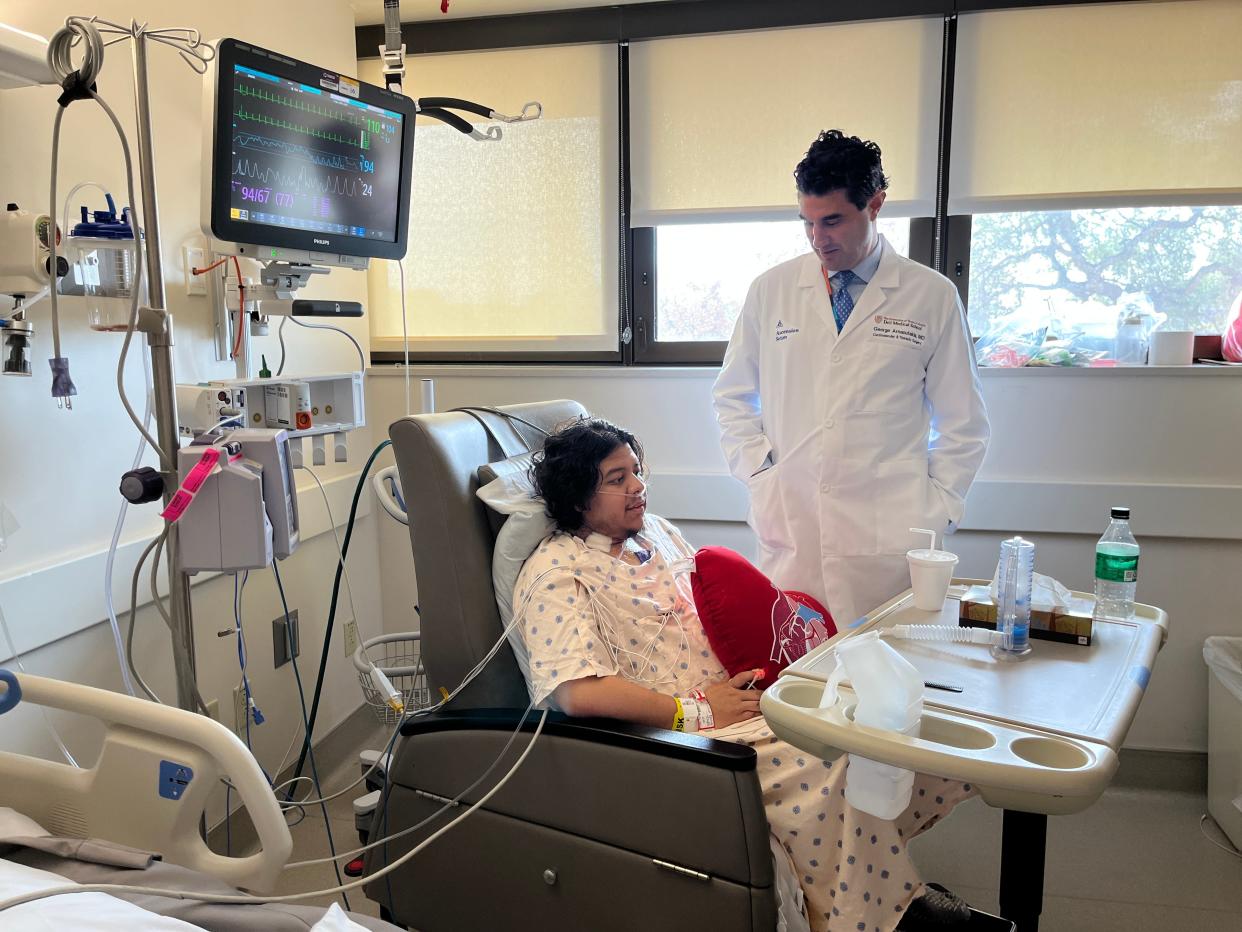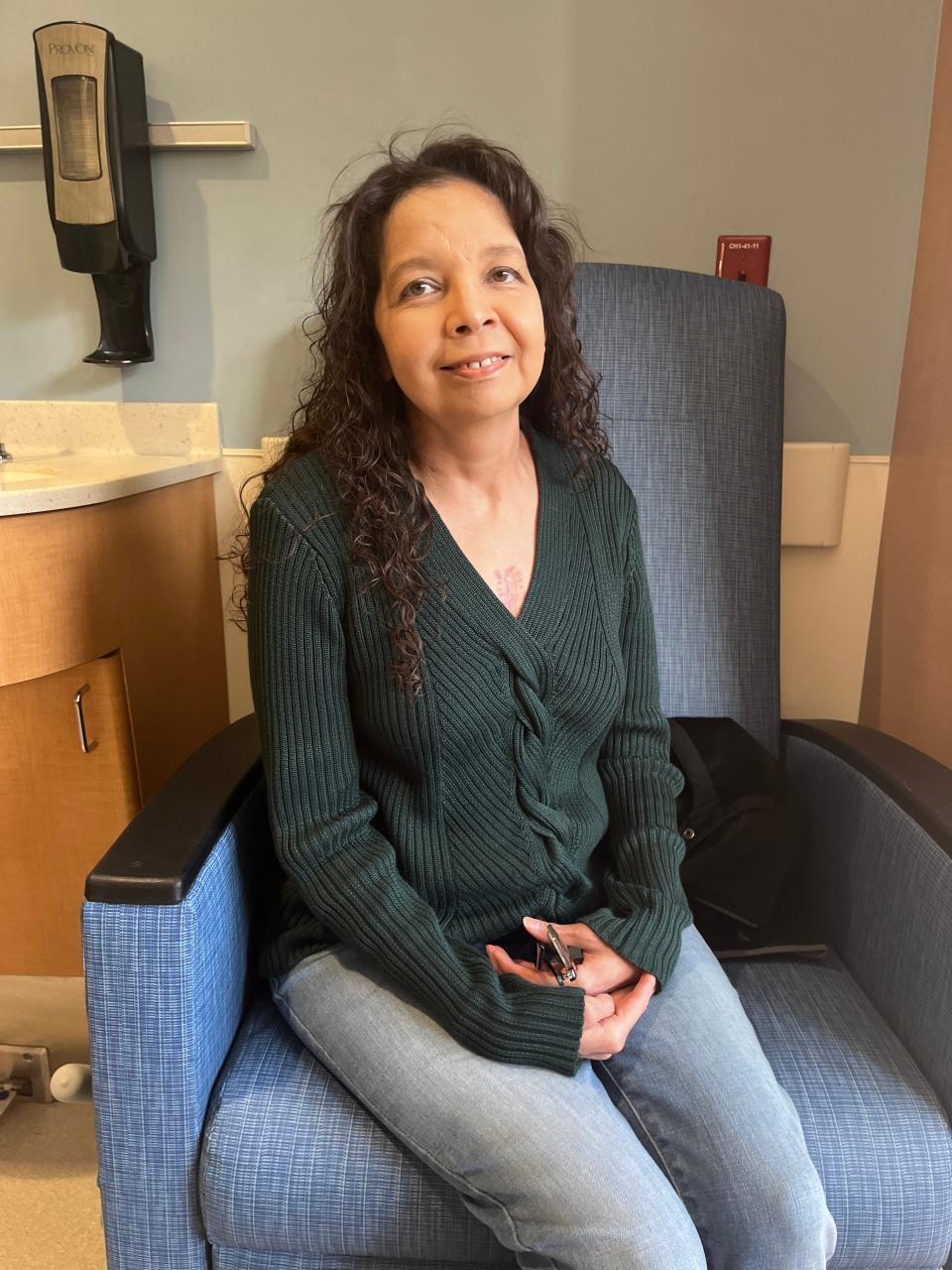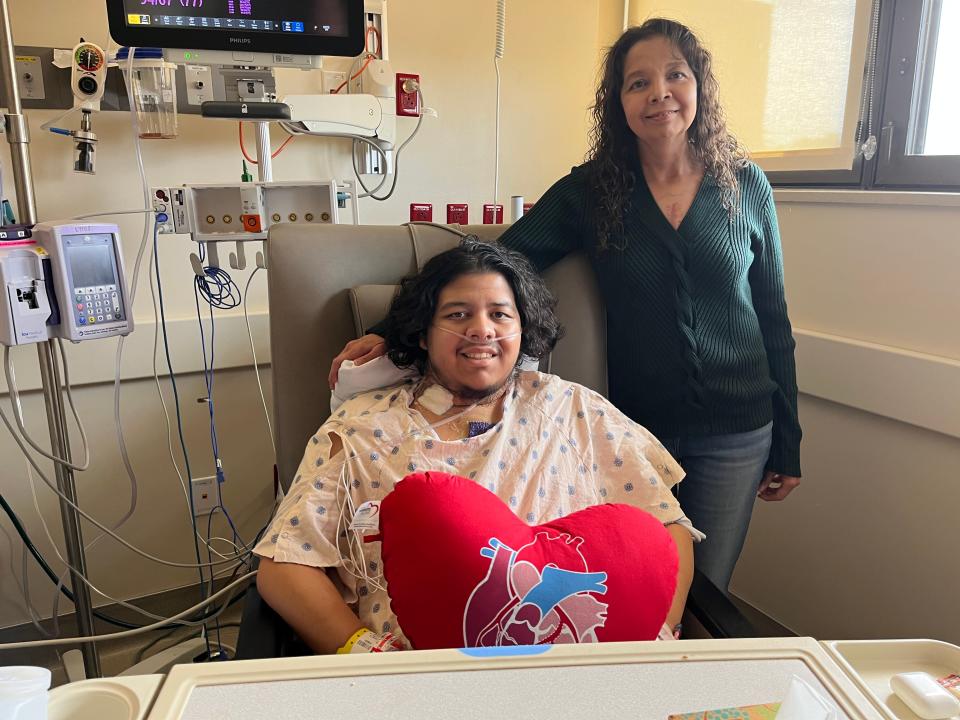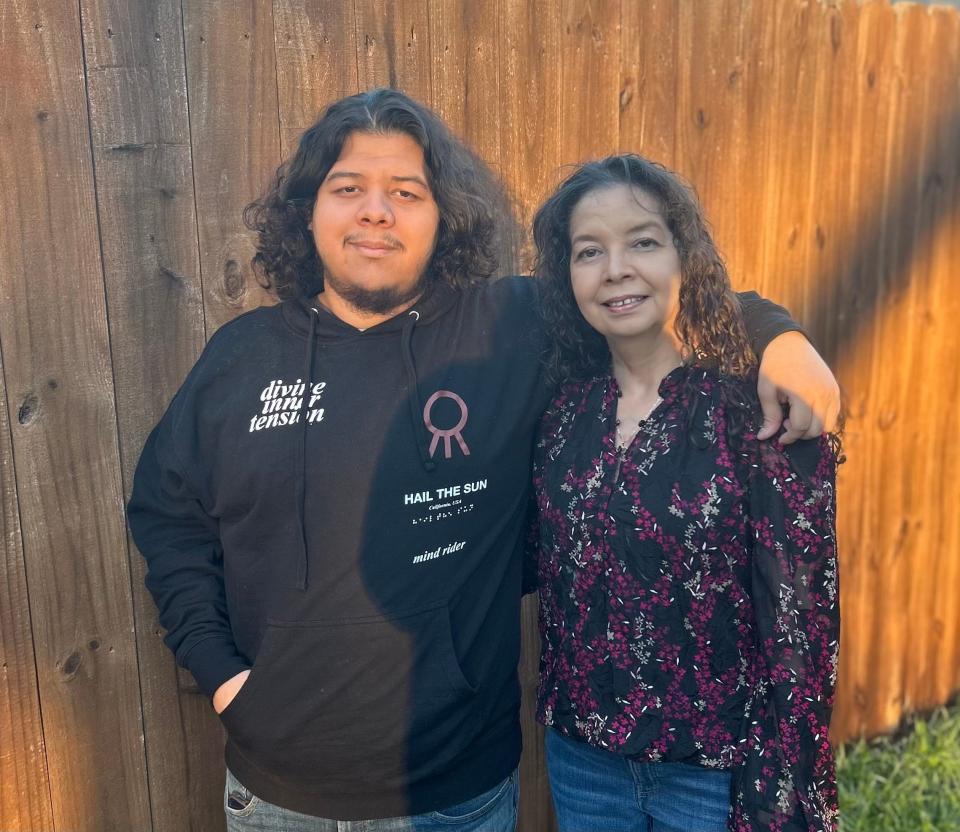Texas woman survives a dangerous heart tear with help of Austin surgeon

Mary Duarte remembers sitting in her Belton home around 6 p.m. June 21 talking to her family when she started to feel a tightness in her chest and chin.
"It felt like I had a 300-pound man sitting on my chest. I couldn't breathe," she said.
The 47-year-old told her family to call 911.
Duarte would soon turn to one of the world's experts in aortic heart valves and Marfan syndrome, Dr. George Arnaoutakis, who arrived in Austin six months earlier to start the comprehensive aortic center at Ascension Seton hospitals. He is the first division chief of cardiovascular and thoracic surgery at the University of Texas Dell Medical School.
An emergency room doctor in Temple connected Duarte with Arnaoutakis.
Knowing her own body
As a child, Duarte had been diagnosed with Marfan syndrome, which weakens connective tissue, including in this case her aorta.
The genetic disorder is usually found in people who are really tall, with large hands, fingers, and long limbs. They have very bendable joints. Duarte can do party tricks like turning her hand all the way around. She doesn't fit the tall stereotype, but the rest of the syndrome's features are there.

She already had her mitral valve replaced in 2007 and again in 2011. She also had a small stroke and a small heart attack. Due to past surgeries and the syndrome, Duarte needed advanced care not available at most hospitals.
Learn more: At Dell Children's hospital, hope for adults with congenital heart defects
A life in danger
When the ambulance arrived, the technicians asked what she had eaten before the pain. "Hot Cheetos," she said, but she knew it was her heart.
A CT scan at the hospital in Temple ruled out the "Hot Cheetos" and confirmed her aorta had torn. The cardiothoracic surgeon in Temple told Duarte and her family that her survival rate was poor and nothing could be done for her there. The emergency room doctor began trying to find an expert on aortic dissections in Marfan patients.

Getting to Austin
Her emergency room doctor tried hospitals in Dallas and Houston, but storms surrounding Temple made it impossible to fly the helicopter ambulance in those directions. The doctor called Austin, where Arnaoutakis was on call at Ascension Seton. It was midnight.
"Because Mary had had two prior operations and Marfan's syndrome, the scar tissue from the prior surgeries makes the surgery a little bit more complicated," Arnaoutakis said. "It's part of my background having done a lot of aortic dissections and redo surgeries that I felt very comfortable when I was contacted about Mary's case."
Medics flew her by helicopter to Austin. From the helicopter, she went into the operating room around 3 a.m. Even with the surgery, Arnaoutakis estimated she still had a 15% to 25% risk of dying.
"Thankfully, Mary arrived here with stable vital signs, and with the experience of the surgical team and the ICU team here and all the wonderful cardiology colleagues and intensive care nurses, she was able to have a positive outcome," Arnaoutakis said.
Sought-after expert
"I'm thankful to God that I got him because he's so talented at what he does," Duarte said of Arnaoutakis.
Since arriving at UT and Ascension Seton at the beginning of last year, Arnaoutakis has brought patients with him from the University of Florida Health Shands Hospital in Gainesville, Florida. They also have come from New Orleans, El Paso and Pakistan.
He said Austin provided a unique opportunity "to build an academic program at a major university with a relatively young medical school with expert clinicians already in the community."
He's currently part of a clinical trial using a new device in aortic repairs. He's building a training program to teach the next generation of experts in aortic repairs and Marfan syndrome.
Austin is also unique because of the Ascension Seton and Dell Medical School collaboration Institute for Cardiovascular Health, connecting specialists from Dell Children's pediatric and congenital patients and Ascension Seton Medical Center's adult patients.

Preventing a future dissection
Marfan syndrome patients must have their aorta monitored with regular imaging to detect a dilation or an aneurysm, signs that a dissection could be impending.
"It's common to have multiple operations," Arnaoutakis said.
"Many who followed me to Austin are aortic dissection patients who want that continued surveillance to occur," he said.
After Duarte was released eight days later, Arnaoutakis consulted with her about other family members who could be at risk. Of her three sons, only one, Christian, 24, has Marfan syndrome. Arnaoutakis took a look at imaging on Christian aorta and discovered he had a large aneurysm that needed to be removed. He had been having a fast heart rate and dizziness.
"We could fix it in an elective fashion before it became an emergency," Arnaoutakis said.
In November, Mary Duarte was again at Ascension Seton, this time as the mother watching her son recover from an aortic repair surgery to remove the aneurysm.
"It feels really good," Christian said days after the surgery. "It's something I don't have to worry about anymore. I have him to follow up with me and take care of it."
Both mother and son are doing well and have had follow-up imaging. "You're my patient for life," Arnaoutakis said.

This article originally appeared on Austin American-Statesman: Austin surgeon leader in aortic dissection surgery in Marfan patients

